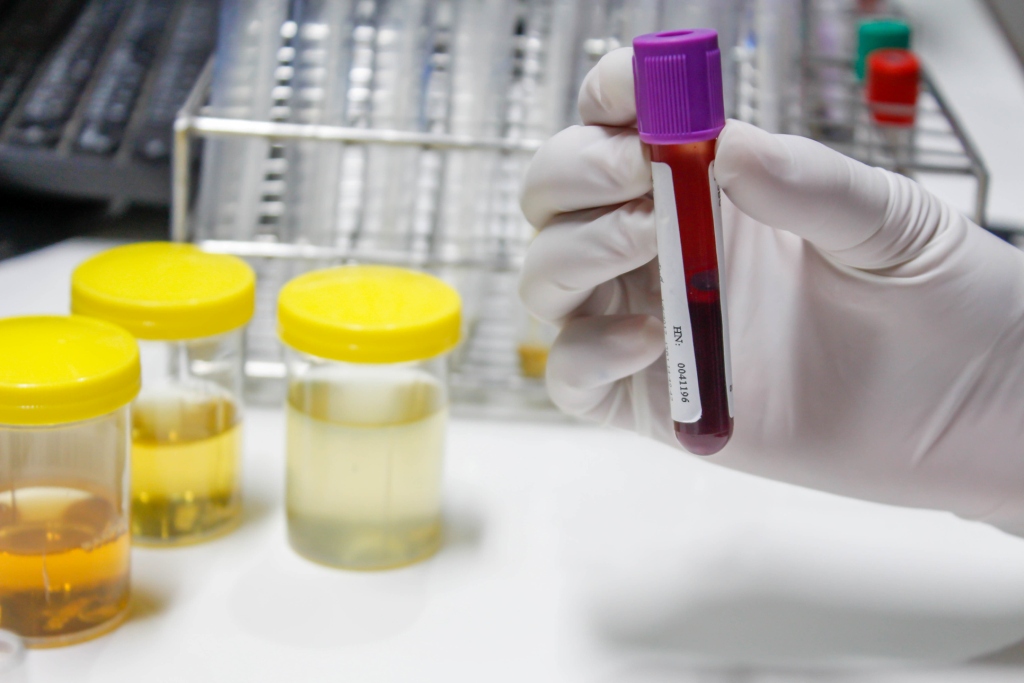- type of work being performed
- duration of the task
- materials being used
- potential of exposure
Medical Surveillance

- Osharigato conducts medical surveillance to ensure the safety of your employees. The purpose of medical surveillance is for the early identification of conditions, if any, that could present an increased risk of adverse health effects related to the task being performed
-
What is Medical Surveillance?
Monitoring of a person for the purpose of early identification or changes in health status due to occupational exposure to chemicals hazardous to health
-
What are the factors that contribute to the requirement of
Medical Surveillance?
-
What are the chemicals which medical surveillance is
recommended?
https://www.dosh.gov.my/images/dmdocuments/regulations/AKKP/pua0131y2000sc002.pdf
These are the general listing of schedule 2 chemicals where medical surveillance is recommended,however there are factors that contribute to the requirement of medical surveillance.Consult an OHD or Chemical Health Risk Assessor for further assistance -
What are the components of Medical Surveillance?
The components of Medical Surveillance Programme include :
- Pre-employment and pre-placement medical examination.
- Biological monitoring and biological effect monitoring.
- Health effects monitoring.
- Investigation of occupational disease and poisoning including workplace inspections.
- Notification of occupational disease and poisoning.
- Assist in disability assessment.
- Return to work examination after medical removal protection.
- Record keeping and monitoring.
-
What are the acts/legislation that governs the safe and healthy
use of chemicals?
- The Occupational Safety and Health (Use and Standards of Exposure of Chemicals Hazardous to Health) Regulations 2000
- Under this Regulations health surveillance is necessary for chemicals hazardous to health as stipulated in the regulations. Medical surveillance carried out under the USECHH Regulations must be conducted by an Occupational Health Doctor (OHD)
-
What is Biological Exposure Indices (BEIs)?
Reference values intended as guidelines for the evaluation of potential health hazards in the practice of occupational hygiene. BEIs represent the level of determinants which are most likely to be observed in specimens collected from a healthy worker who has been exposed to chemicals to the same extent as workers with inhalation exposure at the TLV. These values are developed by ACGIH as a guide for biological monitoring of chemicals.
-
What is Biological monitoring?
The measurement and assessment of agents or their metabolites either in tissues, secreta, excreta, expired air or any combination of these to evaluate exposure and health risk compared to an appropriate reference.
-
What does Chemicals hazardous to health means?
Chemicals which :
- are listed in Schedule I or II;
- possess any of the properties categorised in Part B of Schedule I of the Occupational Safety and Health (Classification, Packaging and Labelling of Hazardous Chemicals) Regulations 1997;
- comes within the definition of “pesticide” under the Pesticides Act 1974; d) is listed in the First Schedule of the Environmental Quality (Schedule Wastes) Regulations 1989.
-
What is Health surveillance?
Any examination and investigations which may be necessary to detect exposure levels and early biological effects and responses, and includes biological monitoring, biological effect monitoring, medical surveillance, enquires about symptoms of occupational poisoning or occupational disease and review of records and occupational history.
-
What is Occupational Medical Surveillance Records?
Forms specified in the guidelines for the purpose of keeping of medical records. All records should be kept for 30 years
-
What are the DUTIES OF EMPLOYER?
- Carry out health surveillance programme as required by the assessment report under USECHH Regulations.
- Health surveillance programme shall be conducted during the working hours and the costs shall be borne by the employer.
- Appoint an Occupational Health Doctor, (OHD) to conduct occupational medical surveillance programme.
- Allow and assist the OHD to visit the workplace to investigate and manage occupational disease and poisoning including access to relevant monitoring and other health related data.
- Co-operate with the OHD in medical removal protection of the worker.
- During the period of medical removal the worker may be allowed to do other work that will not expose him to the hazardous chemical.
- Notify occupational disease and poisoning to DOSH .
- Notify the workers concerned regarding monitoring of exposure levels of chemicals hazardous to health including occupational disease and poisoning.
- Allow the employee access to occupational medical surveillance records.
- Ensure the workplace hygiene is improved, is safe and healthy and does not place the worker at increased risk of material impairment to health from exposure to chemical hazardous to health before allowing the worker to work in the same place so as to ensure the disease or poisoning does not reoccur.
- Record Keeping of diseases and accidents.
- Provide Employee Medical Book.
-
What are the DUTIES OF EMPLOYEE?
- Undergo training on importance of preventing occupational poisoning and disease.
- Report early symptoms and signs of disease ( including self examination) to the OHD and management
- Comply and co-operate in the Occupational Medical Surveillance Programme, as required under USECHH.
- To take proper care of the Employee Record Book and to present it to OHD for Occupational Medical Surveillance record purposes.
Contact Us
Osharigato would like to thank all of you for stopping by! For further details, don’t hesitate to contact us. We will get back to you right away!
Our Address
145, (Ground Floor) Jalan Nb 2,
2/2 Taman Nusa Bestari 2, Iskandar Puteri,
79150 Johor Bahru, Johor
Call Us
07-5502929
012-6307779
